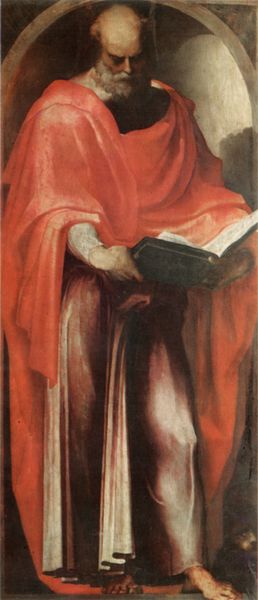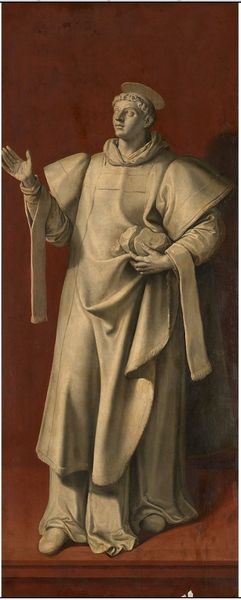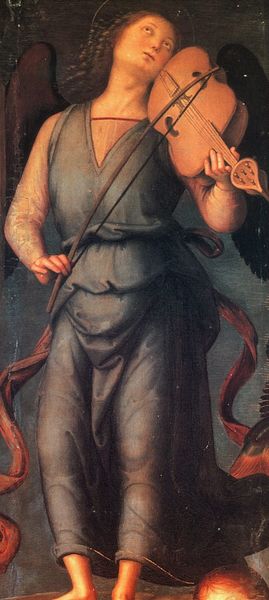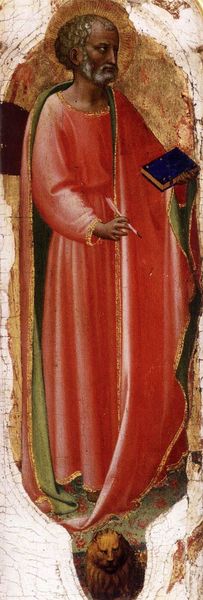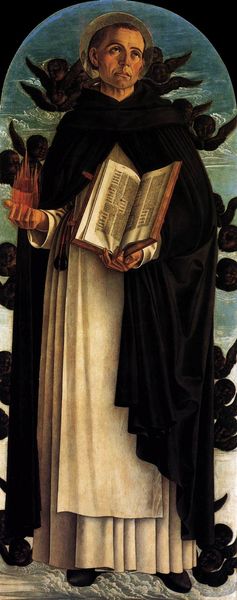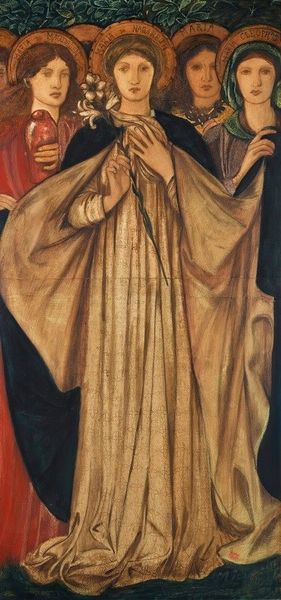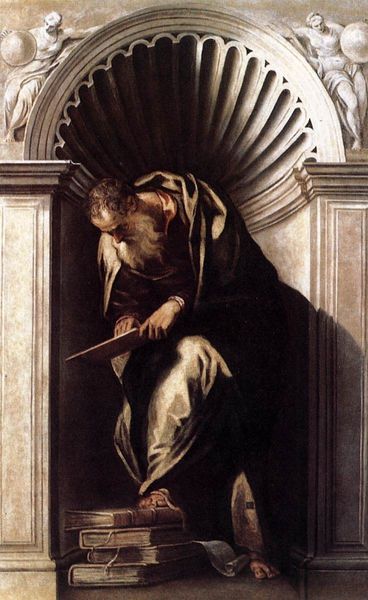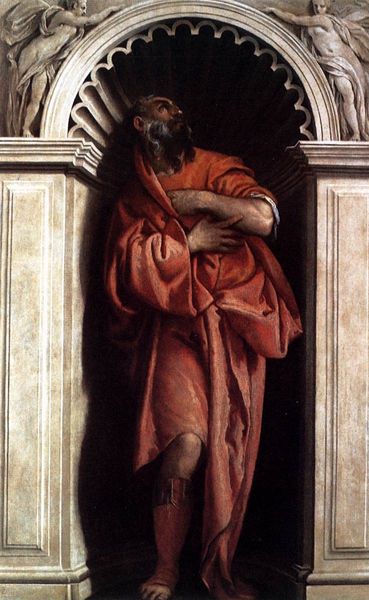
oil-paint
#
portrait
#
oil-paint
#
mannerism
#
oil painting
#
history-painting
#
italian-renaissance
#
portrait art
Copyright: Public domain
Curator: Oh, now that’s interesting. There's a tension between this intense earthy color palette and the serene expression... It's Domenico Beccafumi’s "Saint Markus", painted around 1538 using oil paints. Editor: The intense reds, browns, and ambers – the overall tonality feels like the weight of history bearing down. Looking closer, there are almost no bright highlights, a visual choice I find really telling, when understanding depictions of sainthood and how light figures. Curator: The Renaissance was all about pushing boundaries, so maybe Beccafumi is exploring an earthier idea of spiritual dedication. This isn't a typical heavenly portrayal, is it? There's this sense of intense focus and determination. The architectural niche surrounding him feels more like a frame confining a burning fire, not that stained glass light we’d expect. It almost feels suffocating. Editor: The painting, positioned within the Mannerist movement, seems to reflect a period of theological reformation that permeated social thought with increasing anxiety. Looking beyond a "heavenly" portrait, one might see Beccafumi gesturing toward earthly determination by choosing muted palettes with high chromatic density. This stylistic divergence during the period begs the question, "How does this shift reify evolving power structures between religious institutions and common parishioners?” Curator: Oh, I like that point! I'm struck, too, by his hands. The hands holding that hefty book… Look at the intensity! The pages feel actively considered and digested. But I see weariness as well. A person marked by intellectual labor and duty. Editor: The choice to illuminate only sections of the hands in shadow suggests how Beccafumi directs the viewers to consider Mark as a figure deeply embedded within the physical, intellectual, and moral complexities of their labor, a reality he seems unable to evade despite his theological vocation. He isn't merely "reading;" the brushstrokes imply he grapples with, and quite literally carries, their significance. It humanizes the sacred figure. Curator: The dialogue between this sort of humanizing approach and an established, rigid social order in the Catholic Church is certainly evident in Beccafumi's mark. Perhaps "Saint Markus" calls on each of us to interrogate institutional frameworks and assumptions. Editor: Exactly, challenging them through art allows us to actively imagine new frameworks. "Saint Markus," as you've observed, embodies an intellectual spark, kindling new modes of thinking critically.
Comments
No comments
Be the first to comment and join the conversation on the ultimate creative platform.
